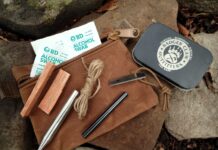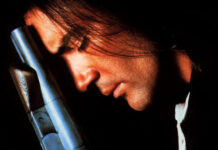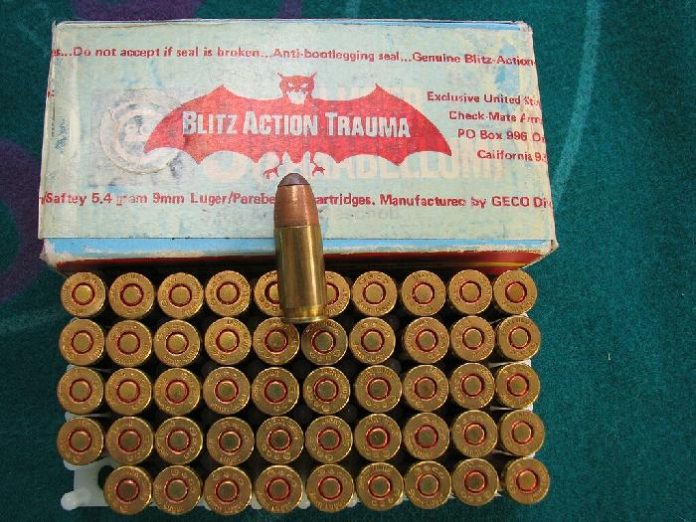
The history of hollow points goes back to the late 19th century. The first hollow points were molded lead rounds with a hollow point designed to reduce weight. A reduced weight meant a faster bullet. The fact that the round tumbled and expanded was a happy accident. Rounds like .32-20, the .38-40, and .44-40 were early adopters of hollow point projectiles. This led to them being banned from warfare under the Hague Convention, which is how the Geco Blitz Action Trauma rounds came to be.
According to the gun magazines of the 1980s, if you carried a 9mm, it should be loaded with Blitz Action Trauma rounds or BAT Rounds for short. These were exotic rounds from Germany that fetched upwards of a buck a round. A buck a round is pretty normal these days, but it was absurd in the 1980s. Still, they were seemingly popular, especially in an era where jacketed hollow points had taken root just yet.
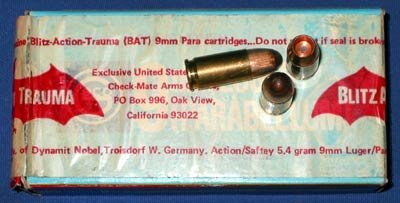
The BAT rounds came in 9mm and .357 Magnum and were copper. I’ve seen the weights mentioned to be 84 and 86 grains, so it’s tough to say who is accurate and who isn’t. The solid copper slugs had a cavity that went all the way through them, and that cavity was filled with a plastic plug.
The plastic plug was to ensure the round would feed and depart from the projectile when the gun fired. The rounds moved at about 1,400 feet per second from a Browning Hi-Power. At first glance, it seems to be a bit of a mix between a hollow point and exotic loads like Liberty Defense.
Origin of the Blitz Action Trauma Rounds
Geco, a German Company owned by Dyanmit Nobel, apparently initially developed the rounds for shooting tires. Apparently, they could punch a neat 9mm size hold through a tire with little fear of overpenetration and ricochets. Some enterprising salesman also saw an opportunity to cash in on an exotic ammo type that could be an effective defensive round.
To me, it seems odd that the Blitz Action Trauma round would be needed to pop tires. How much action was that a necessity? This is pure speculation, but it seemed to me that the tire-popping action was just an excuse to produce an effective hollow point cartridge for police use. Geco is a German company and this time, the German police carried FMJs because that’s what the military carried. The BAT rounds were technically FMJs due to the plastic plug.

As you and I know, FMJs aren’t great man-stoppers and aren’t great for police work. They pose additional risks due to the overpenetration of threats. This wasn’t a big deal when the police round of choice was the .32 ACP. In fact, FMJs make sense when you use the little .32 ACP cartridge.
The New World of 9mm
However, the Munich Massacre and the rise of left-wing terrorism in Germany caused the police to move to more potent firearms. The 9mm became the cartridge of choice, and the Walther P5, the HK P7, and SIG P6 became the guns of choice. 9mm FMJs tend to zip through things, including terrorists.

In 1977, the newly formed GSG9 stormed a Lufthansa airplane with HK P7s, S&W Model 66s, and MP5s. The rounds loaded were the Blitz Action Trauma rounds. In short order, the GSG9 killed four terrorists and freed all the hostages. I don’t know if the GSG9 used the rounds with permission or basically used the ‘Technically’ excuse.
The MP5 magazine went from straight to curved to aid in reliability and reportedly ensured the BAT rounds would feed. The BAT projectiles certainly saw some action in Germany.
Effectiveness
I can’t find any gel testing or wound studies on the Blitz Action Trauma rounds. If YouTube was around back then, we’d know everything there is to know about these rounds. Sadly, it’s tough to say how effective they were. They were available in the United States, but it seems like they were never evaluated, or the tests were never widely published.
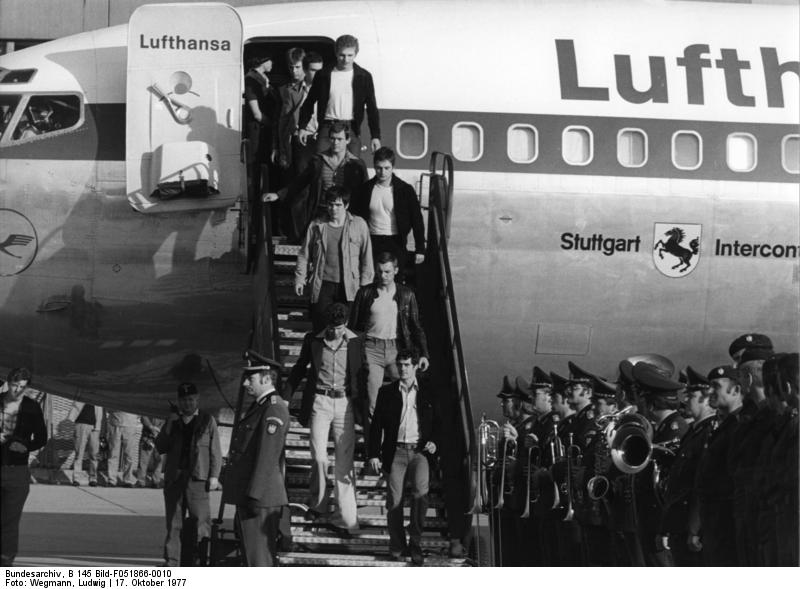
Compared to FMJs, I believe they were less likely to over-penetrate. I imagine they would expand and deform, but not as efficiently as modern JHPs. We know they worked well in putting down four Red Army Faction terrorists. The Blitz Action Trauam rounds form an interesting part of the history of defensive ammo.

